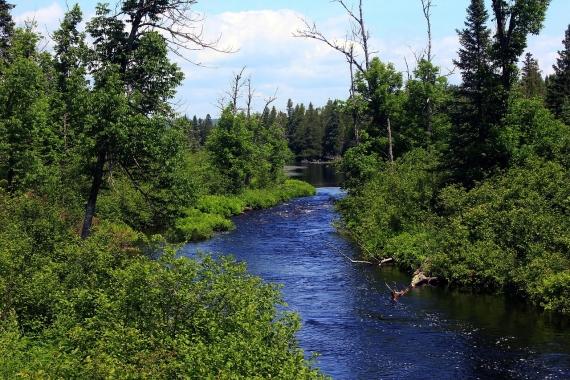Investing in Land as A Retirement Saving Option

Retirement is something that every worker in the world dreams about. The days when you can do what you want - not go to a 9 to 5 job and only really enjoy the weekends. And people stash away money in their 401(k) in hopes that when they retire, they'll have enough money to live comfortably for the rest of their days. These investment options are tax-deductible or tax-deferred, so it's smart to max them out when you have the opportunity. But, they aren't the only investment products that you should be investing in. And you don't want to take a gamble on your retirement.
Land can be a good investment for retirement, but not all land is created equal. If you were wise enough to invest in Las Vegas desert land prior to the gambling capital of the United States being erected, you made a lot of money. But under most circumstances, no one would recommend investing in desert land.
Land is as valuable as its potential.
If communities exist, the land can be used for farming, grazing, timber or other purposes. In other words, it has a positive value. Land in the middle of Death Valley, on the other hand, is a high risk for even the most optimistic investors.
Income-Earning Land as an Investment
Income is what you need for retirement. Income that is not from your own hands. Passive income is best for a retiree, and owning land can provide this income. Income-earning land is the ideal choice for most retirees because its a safe bet.
A few options that exist are:
• Rental Properties: Buying vacant land and putting up a home to rent can net you significant income. This can be done hands-off with a property manager, or you can simply collect your checks monthly. There are upkeep costs and concerns:
- Repairs - Insurance - Vacancies - Land upkeep
• Hunting Land: You can lease the land to hunters on a yearly or seasonal basis. While hunting leases wont net you as much as rental properties, there is zero upkeep, and you can make some money as your land accrues in value.
• Farm Leases: Nearly 40% of all farmland in the United States is rented or leased. And the number of leases and rentals is still increasing. With farm leasing, you can lease the land for crop growing, or cattle and ranching. The price per acre varies greatly from state to state.
• Energy Leasing: A new trend that is picking up steam is leasing land for solar arrays. This is still a new trend with little statistics provided, but it does provide monthly income, albeit the lease contracts are long.
• Timber: Billions of trees per year are cut down for timber, and some woods, such as cherry and maple, have prices rising 4% or higher per year. The average acre produces $1,800 of wood in the northeast, for example. Timber is a medium-term to long-term investment, depending on the type of tree grown. Selling in bulk, timber provides income once per harvest not monthly.
And this is a fairly good option for retirement savings. When you retire and you have a 401(k), for example, once you take out your money, you wont be making any more money from your investment.
If you decide to take out smaller sums of money, youre also making less money over the long-term, as your overall investment portfolio keeps shrinking. Income-earning land has a price that continues to go up. You will find that not only will you be able to make money off of the land, but you'll also be able to sell the land at a premium as the price of your land accrues year-over-year.
Vacant Land as a Retirement Savings Option
Land prices are tricky to assess their return.
Why?
* Location * Population * Fluctuations
The location of the land is key to the price of the land. And the population growth in the area is important, too. Land in the middle of Las Vegas was selling for rock bottom prices before the casinos and city grew to what they are today.
So, you need to consider where you're buying land.
A good example of price increases (ROI) from historical prices is:
* Alabama: Land value in 1975 was $1,239, and the same propertys land increased to $20,363 in 2015.
* New York: Land value in 1975 was $3,481, or 9.4% of a propertys total value. In 2015, land price accounted for 31.8% of a propertys value, or $106,785 for the land alone.
These numbers are provided based on a property's value and the land value of the property. So, essentially, this takes a homes price and considers the land value of just the land. This data doesn't state the amount of land, yet we can see how within 40 years, land prices skyrocketed in New York and Alabama. New Yorks value is obviously higher because of New York City.
Using an investment calculator, $1,239 (the price of Alabama land) with compound interest over a 40-year period at a 7% return rate would net you $12,506 after a 40-year period. In this case, you would make more from land dramatically more. The $3,481 investment in New York land would net you $35,135 after 40 years.
Even at a 10% rate, you would still lose out when investing in stocks versus land, with your $3,481 investment coming out to $90,969 in 40 years.
Now, don't misunderstand, there are upkeep costs which may outweigh the benefit of land over your 401(k) as an investment. You'll need to pay property taxes on vacant land, and these prices are normally low if there are no structures on the property.
In most cases, even if the property tax price for your New York property has taxes of $1,000 a year, or $48,000 over 40 years, you would net $58,785 over $35,135 in the stock market. Overall, youll find that land returns are much better than investing your money elsewhere.
And land is something that can't go bankrupt or disappear overnight like a company. A diverse retirement portfolio is the best option for any retiree, but land should account for some of your portfolio. You can earn much more from land in the long-term than from the average stock market return.
What many people fail to recognize is that a diverse portfolio is the best option for your retirement. You want to invest in something that is long-term and secure. And, I want to emphasize that long-term is the best option when investing in land.
Investors consider land a high risk investment because it does not have a high liquidity. What this means is that it may take some time, months in most cases, to sell the land and to make a profit off of it. But land has provided many people with a very comfortable retirement.
The trick is to choose land that is:
• On the border of an area experiencing economic growth and expansion.
• Zoned appropriately, whether it be commercially or residential, for the area.
• Priced well under value compared to surrounding land.
• Land that is a already equipped for building is ideal.
There is never a 100% guarantee that economic growth will occur in the area that you buy land. So, I recommend having the land work for you. This is definitely more hands-on than what some retirees will want to consider, but it works in many ways to make money.




